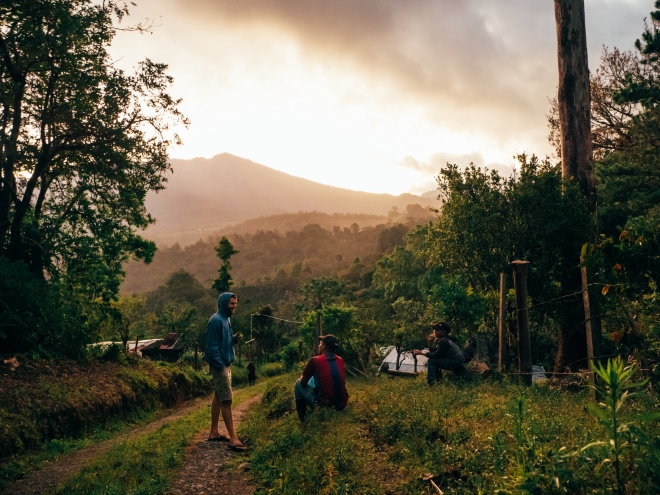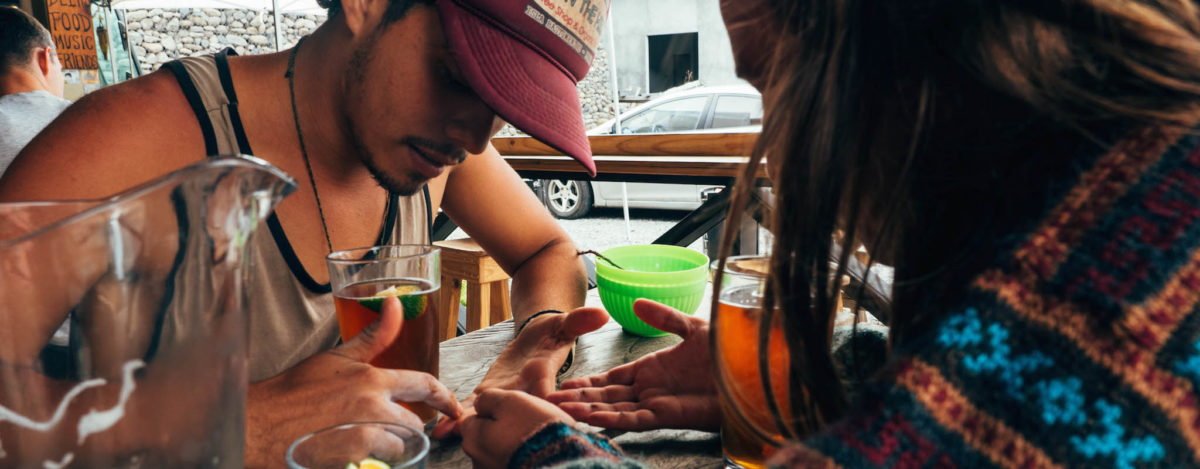What Saved Me After this Diabetes Error
A handful of my friends test their blood sugars fairly often. It’s a bit of a game. What does the non-diabetic’s blood sugar do after a hard day of climbing? Or how high does it go after a farmer’s market invasion and never-ending smoothie consumption? In these tests, my friends’ eyes are opened to how volatile blood sugar really is. Even their readings—with a perfectly functioning pancreas, ready to take on the world—go up and down, sometimes beyond the rhythms and reasons we expect.
There were a few of us piled into my friend’s tiny living room, gearing up to consume a post-climbing feast of monstrous proportions. For me, there was a quick test, correction for my high blood sugar, and dose for the meal I was about to eat. As I was putting my stuff away, Emily mentioned how wild it was that my new Dario meter connected to my phone. Interest rose and soon enough I was rummaging for a new lancet so Mauricio could test his blood sugar. Emily and Adonaí had tested countless times, but this was going to be Mauricio’s first go.
He plugged the strip receptor into the headphone jack, opened up the app and five seconds later—when the countdown would have been finished for me, or you, or a brave 5-year-old who knows their way around a glucometer—he just sat there staring. He was scared. It took some calming, and then some verbal jabbing, but with a full body flinch, he was squeezing his finger and placing a drop of blood into this futuristic contraption.
“What’s the okay range again?” he looked up and asked. I started explaining, but stopped short as a found the number 17.3 mmol/L311 mg/dL on the screen. I told him to go wash his hands, because the fruit from our snacking had clearly interfered. Hands washed. Procedure repeated. 5, 4, 3, 2, 1. This time the screen read 17.8 mmol/L320 mg/dL. There was just no way. There had to be something off. My head was running a thousand miles an hour. Then, I remembered how often we all make fun of him for peeing so often. In an instant, my brain switched from racing to running in slow-motion.
Emily piped up. “Let me test myself and see what it says. I tested a few days ago and was fine, so we know I’m not diabetic.”
Yes. Let’s do that. Let’s do anything that doesn’t involve me having to diagnose my friend with a lifelong disease—especially one that is hard-as-hell to get the right resources for in Panamá. She tested. 5, 4, 3, 2, 1. The meter read 304. It was a breath of fresh air. We got a giggle out of Adonaí, who until this time had been a quiet onlooker in the kitchen. So Mauricio doesn’t have diabetes. Good news all around. I’m pretty sure there were high fives.

That happiness lasted about as long as it took for my eyes to rest on my little diabetes bag. That meter, now known to be broken, is what I had just given myself a correction from. I had dosed for a meal, but had also dosed for my blood sugar being 20.3 mmol/L365 mg/dL. If somewhere between Mauricio and Emily’s numbers was “perfect,” that meant my blood sugar was actually around 150. Turns out that twenty minutes earlier, when numbers were adjusted for the meter error, I had corrected down to a ghastly -5.3 mmol/L-95 mg/dL.
Thankfully, while my brain had done a dance between running at the speed of light and slow motion with the thought of a friend discovering he had diabetes, this overcorrection news only brought about a strong calm. My meter was more or less useless, so additional testing was not going to be of any purpose. I didn’t get elaborate with my plan. I was going to eat an unheard amount of food, at intervals so my body could handle it, and bring the glucagon along just in case. We were living in a town with no hospital, so a run to the ER for an IV of dextrose was out of question. I was also 150-ish, so that added a cushion of time as well. It would take a while before the dose would start affecting me. So, we sat, strewn across couches, chairs and stairways and ate the same feast we had been so excited about before this disaster had crossed out minds.
The plan was to go to the brewery after dinner, but a stop to the supermarket was quickly thrown in front of that venture. There, I got my first feeling of a lowering blood sugar. Before I even got to the cashier, I had slugged a box of maracuyá juice. As I watched my friends, now at the brewery, pass glasses for the pitcher coming our way, I drank another juice and ate a bag of hard caramels. In the end, there was very little excitement to the evening. We made fun of my bag of candy and juice box being on the bar as much as we made fun of the foam mustache Adonaí had accidentally given himself. I paused every once in a while, focusing on how my body felt, knowing I would call a friend aside and head home, or to a hospital, if need be. There were glances at fingers—comparisons between climbing calluses and finger pricking calluses. By the time we were ready to go, the glucagon still sat untouched on its own barstool, along with that Dario meter that had more or less tried to kill me.
In the time since, I’ve thought about this day more than a handful of times. What lesson did I learn? I haven’t continued to use the Dario meter, nor will I ever recommend it to another type 1 (T1), but that can’t be the only lesson. If none of us used companies that had batch errors in their products, we wouldn’t have any resources left in front of us. Unfortunately, we live in a world where the possibility of being on the receiving end of a bad batch must be accepted, even if most of the time, we block this reality from our thought process. Maybe it was my ability to take a deep breath and realize it was up to me, rather than diabetes technology, to control the situation.
Being able to stand still, take a second and gauge where my blood sugar sits is a skill more valuable than any sort of new sensor or software that shines brightly on the web pages of type 1 products. Had my evening not been accompanied with confidence in sensing that, I would have been a mess and, without a doubt, in the first taxi to the hospital 65 miles down the road. Maybe it was the calm. Actually, yes, I’d venture to say that my biggest lesson was definitely the calm. That was the gem that let a plan be made quickly and kept my friends and I all on the same page.
So, in the end, it was a day as scattered as any other normal T1 day out there. I saw my friend, a strong-as-nails climber, flinching and needing positive reinforcement to do something that type 1 toddlers have down to such a science they often do it without blinking an eye. We saw advances in technology, the stuff that brings in billions of dollars to pharmaceutical companies, fail me, with extremely dangerous consequences. There was an ability to be calm, even though, if you were to see the scenario on paper, it should be the definition of utter panic. There were names used beyond my own —and while you probably don’t know Mauricio, Emily and Adonaí, I can bet you have your own versions of them—your own versions that are the glue that keep the whole thing together.
And if you don’t, my e-mail is acarterclark@gmail.com. I might live out of a backpack in and out of the mountains, but I promise, I’m pretty darn good at responding to messages.





